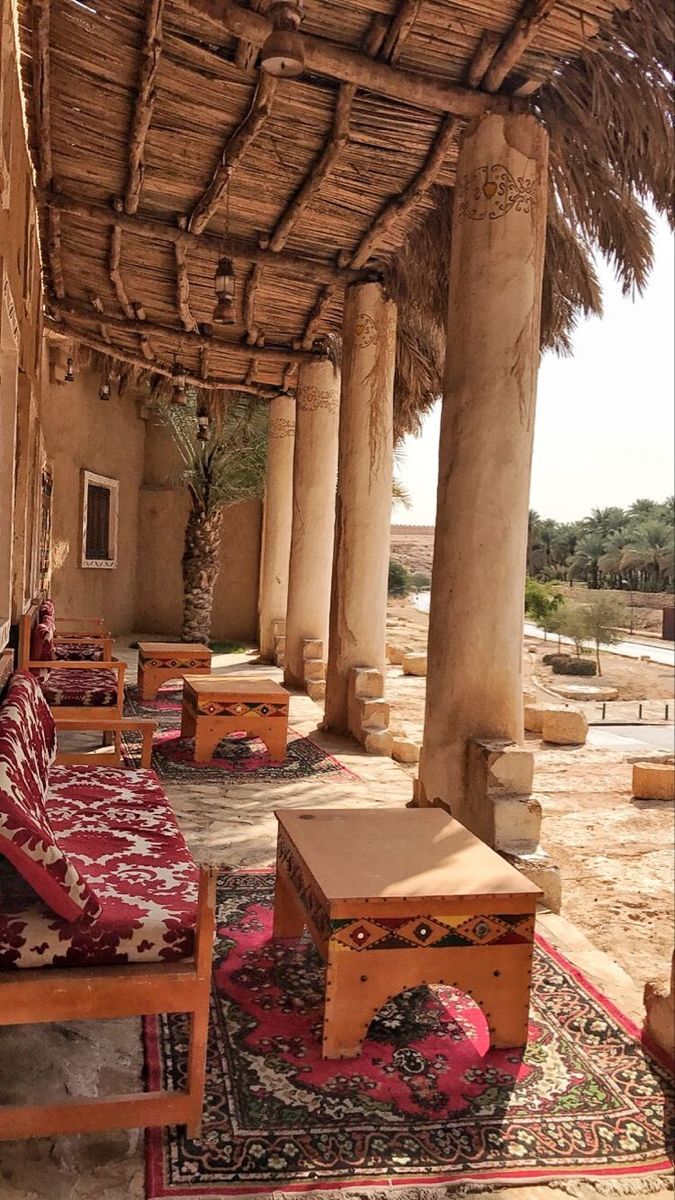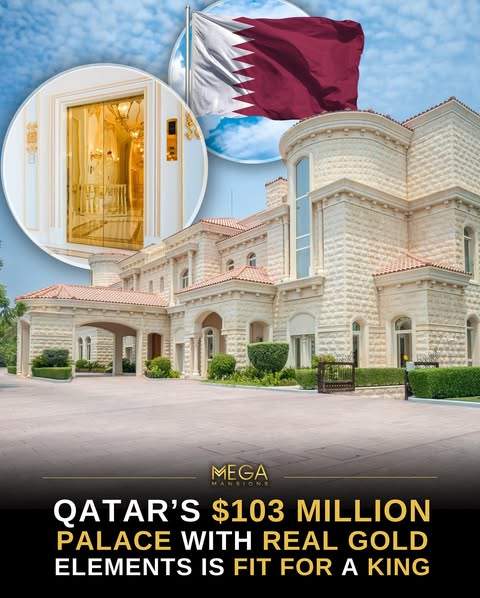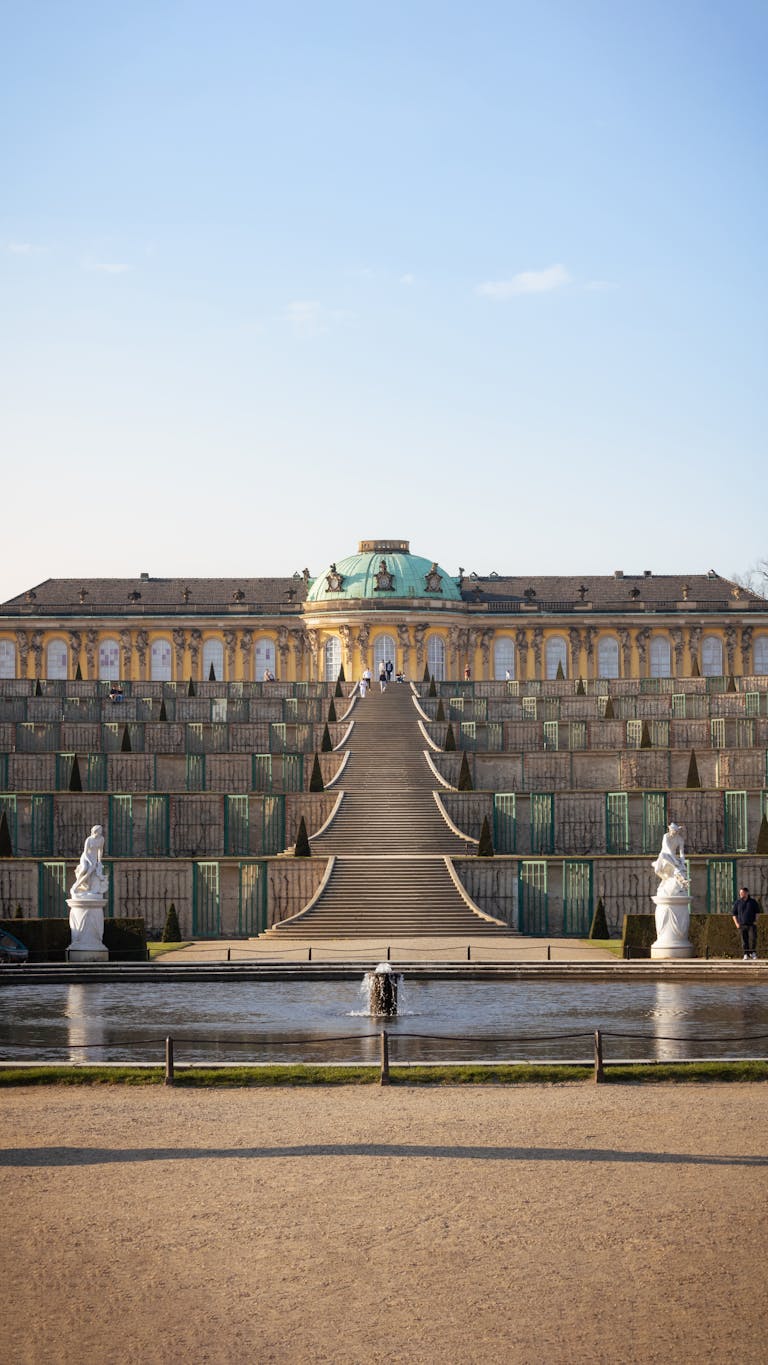In the heart of the desert, where scorching heat by day gives way to sharp drops in temperature at night, humans have always faced extreme environmental conditions. Desert architecture has emerged as one of the most innovative solutions in these harsh climates, imposing serious limitations on daily life, affecting productivity and overall well-being. Yet, throughout history, people living in arid regions have developed innovative solutions that help reduce the impact of these extreme climates making desert life not only bearable but also beautiful.
Among these solutions, desert architecture stands out as one of the most impactful fields shaping quality of life in harsh environments. By using locally available materials and climate-responsive techniques, this architectural style has long offered sustainable ways to live comfortably in some of the world’s most challenging landscapes.

Introduction
This article explores how desert architecture contributes to sustainable tourism in arid regions. Sustainable tourism aims to balance development with environmental protection, ensuring that natural and cultural resources are preserved for future generations. Since desert architecture is a direct response to the challenges of extreme climates, it offers practical and inspiring models for enhancing sustainable tourism.
These architectural approaches don’t just improve living conditions for local communities they also enrich the visitor experience, offering culturally rich and environmentally responsive designs that reflect regional heritage.
Objectives of the Article
This study aims to explore the role of desert architecture as a key tool in promoting sustainable tourism in arid areas. It highlights how this traditional design approach can strike a balance between conserving natural resources and supporting tourism activities. Additionally, it emphasizes the importance of architecture in preserving and showcasing local cultural identity ultimately increasing the appeal of desert regions as unique travel destinations.
Understanding Desert Architecture
Desert architecture refers to a traditional architectural style that emerged and evolved in hot, arid regions. It is a product of a specific environment marked by extreme temperature fluctuations between day and night, aridity, lack of vegetation, and other severe climatic factors.
These combined environmental challenges pushed builders to adopt both economical and creative approaches designing structures that make the best use of available local materials. This led to the development of urban patterns uniquely suited to desert life, later known as desert architecture .

Key Characteristics of Desert Architecture:
| Feature | Description |
|---|---|
| Compactness & Unity | Buildings are clustered closely together to reduce exposure to direct sunlight and hot winds, creating natural shade and maintaining indoor comfort without high energy consumption. |
| Twisting Streets & Reduced Open Spaces | Narrow, winding streets minimize exposure to solar radiation and strong winds, contributing to a more sustainable and comfortable living environment. |
| Gradual Spatial Transition | There’s a clear transition from public to private spaces, with homes oriented inward around central courtyards. This ensures privacy, enhances comfort, and reduces environmental impact. |
| Internal Openings & Courtyards | Houses open inward toward internal courtyards, which serve as the center of daily life. These open yet shaded spaces enhance natural ventilation and keep buildings cool, reducing reliance on modern cooling systems. |
| Organic & Functional Design | Designs are flexible and adapt naturally to the surrounding environment. Spaces are used efficiently, serving multiple purposes while conserving resources. |
| Use of Local Materials | Traditional desert architecture relies heavily on locally available materials like mudbrick and stone. These materials provide excellent thermal insulation, protecting against harsh weather and reducing construction costs and energy use. |
Despite variations across different Arab and Islamic countries, desert architecture shares several consistent features shaped by two main influences:
- The Desert Environment
The harsh desert climate with its extreme temperature shifts, dryness, sandstorms, and limited water has directly influenced architectural forms. Builders adapted their methods to protect residents from these tough conditions, using local materials and site specific strategies. - Arab-Islamic Culture
Islamic architectural principles were naturally integrated into desert architecture, aligning with religious values and social norms. Elements like inner courtyards, small exterior openings, wind towers (malqaf), and domes helped mitigate harsh desert conditions. The organic, compact urban fabric also reflected Islamic teachings on community life and modesty.
Desert Architecture and Sustainability
1. Sustainable Design Principles in Desert Architecture
Desert architecture originated from the natural conditions of the region and the locally available building materials. Sustainability was not a concept discussed formally it was simply part of daily life. Communities lived in harmony with their surroundings, using what was available without waste.
Today, many of the principles of traditional desert architecture align perfectly with modern sustainability goals. These include:
- Natural Ventilation: Courtyards and wind towers allow passive airflow, reducing the need for mechanical cooling.
- Thermal Mass: Thick walls made of mudbrick or stone absorb heat during the day and release it slowly at night, stabilizing indoor temperatures.
- Local Materials: Using readily available, natural materials lowers transportation emissions and supports the local economy.
- Shading & Orientation: Buildings are designed to minimize sun exposure, with narrow streets and overhangs providing natural shading.
All of these contribute to energy efficiency, environmental preservation, and improved indoor comfort core aspects of sustainable design.

2. Environmental Principles
Sustainable desert architecture focuses on harmonizing with the surrounding environment. Site selection is carefully considered to avoid areas prone to sandstorms or extreme heat. Locally sourced materials reduce the carbon footprint associated with transporting industrial materials.
Additionally, traditional desert buildings use thick walls and domed roofs to insulate against extreme temperatures — eliminating the need for artificial air conditioning. These elements make desert architecture a timeless model for sustainable building practices.
Sustainable Tourism: Concept and Global Relevance
What is Sustainable Tourism?
Sustainable tourism seeks to balance economic development, environmental conservation, and cultural preservation. It aims to meet the needs of tourists and host communities today without compromising the ability of future generations to enjoy the same resources.
Tourism must be managed responsibly to avoid environmental degradation, loss of biodiversity, and erosion of local cultures. Irresponsible tourism can damage ecosystems, pollute water sources, and erode traditional lifestyles in pursuit of short term gains.
Why It Matters Globally
International organizations such as the World Tourism Organization and the United Nations Environment Programme emphasize the importance of sustainable tourism. Events like the Manila Declaration (1980), Sofia Declaration (1987), and Cairo Declaration (1995) have highlighted the need to preserve cultural and ecological diversity through responsible travel.
Sustainable tourism should:
- Protect natural ecosystems and biodiversity
- Promote authentic cultural experiences
- Ensure economic benefits reach local communities
Impact of Desert Architecture on Sustainable Tourism
1. Integration with the Local Environment
Desert architecture serves as a powerful example of how built environments can integrate seamlessly with their surroundings playing a vital role in promoting sustainable tourism. By relying on local materials like mudbrick and stone, desert buildings minimize environmental impact while visually blending into the landscape.
These materials also offer excellent thermal performance, helping regulate indoor temperatures naturally. For instance, thick walls and small windows reduce heat gain during the day, while wind towers channel cool breezes indoors all without consuming electricity.
Moreover, desert architecture reflects centuries-old traditions and craftsmanship, giving visitors a tangible connection to the region’s history and culture. This integration makes desert locations appealing to travelers seeking immersive, meaningful experiences.
2. Unique and Comfortable Tourist Experiences
Desert architecture doesn’t just look beautiful it provides real comfort in harsh climates. Visitors staying in traditional desert accommodations benefit from natural cooling techniques, including shaded courtyards, thermal mass walls, and passive ventilation systems.
These buildings often feature handcrafted details like arches and ornamental carvings that showcase local artistry. Interior courtyards offer peaceful retreats, allowing tourists to relax away from the noise of modern cities while enjoying views of the surrounding desert.
Such experiences go beyond sightseeing they offer deep engagement with local culture and lifestyle, making desert tourism not only enjoyable but also educational and memorable.
Real-World Examples

1. Msheireb Downtown Doha – Qatar
Msheireb Downtown Doha is a prime example of how traditional architecture can be revitalized to support sustainable tourism. At its heart lies Msheireb Museums, a collection of four restored traditional Qatari houses that showcase life in early 20th-century Qatar.
Built using traditional desert techniques thick walls, shaded courtyards, and natural ventilation these buildings maintain indoor comfort without excessive energy use. The project blends old and new, preserving heritage while embracing modern sustainability standards.
It offers tourists a unique cultural experience connecting them with Qatar’s past in a modern, eco-conscious setting.

2. Ghadames, Libya
Ghadames, a historic oasis town located near the borders of Libya, Tunisia, and Algeria, is another remarkable example. Recognized by UNESCO as a World Heritage Site, Ghadames showcases a centuries-old urban fabric that evolved organically with the environment.
Its tightly packed mudbrick buildings, narrow streets, and inner courtyards create a microclimate that protects residents from extreme temperatures. The city’s layout slows down wind speeds, reduces sun exposure, and maintains cooler indoor temperatures all without modern technology.
For tourists, Ghadames offers a rare opportunity to experience authentic desert life surrounded by traditional architecture, lush palm groves, and centuries old cultural traditions.
Common Challenges in Desert Tourism Development
Despite its potential, developing sustainable tourism in desert regions comes with several challenges:
| Challenge | Description | Possible Solutions |
|---|---|---|
| Limited Economic Resources | Tourism benefits may not reach local communities if labor and materials are imported. | Prioritize local employment and sourcing. |
| Illegal Activities | Increased tourist traffic can lead to smuggling or illegal trade. | Strengthen local governance and security. |
| Loss of Cultural Identity | Exposure to foreign cultures may dilute local traditions. | Promote authentic cultural experiences. |
| Engaging Local Communities | Involving locals in tourism requires training and education. | Offer skill-building programs tailored to tourism. |
| Unstable Local Conditions | Harsh environmental factors like water scarcity increase operational costs. | Invest in sustainable infrastructure. |
| Global Crises Sensitivity | Overreliance on tourism makes economies vulnerable to global disruptions like pandemics. | Diversify local income sources and build resilience. |
Conclusion
Desert architecture is more than just a building style it is a testament to human ingenuity in the face of extreme environmental conditions. Far from being outdated, it offers valuable lessons in sustainability, cultural preservation, and climate adaptation.
By integrating traditional desert architecture into sustainable tourism strategies, we can create travel experiences that are not only comfortable and beautiful but also deeply rooted in place and culture.
As the world faces growing environmental challenges, desert architecture reminds us that innovation doesn’t always mean reinventing the wheel sometimes, the answers lie in the wisdom of the past.
If you enjoyed this article, feel free to share it with fellow architects, planners, or anyone passionate about sustainable design and cultural heritage.
ArchUp continues to track innovations in the construction sector, documenting projects that embrace creativity and redefine how cities are built.







